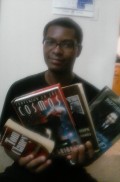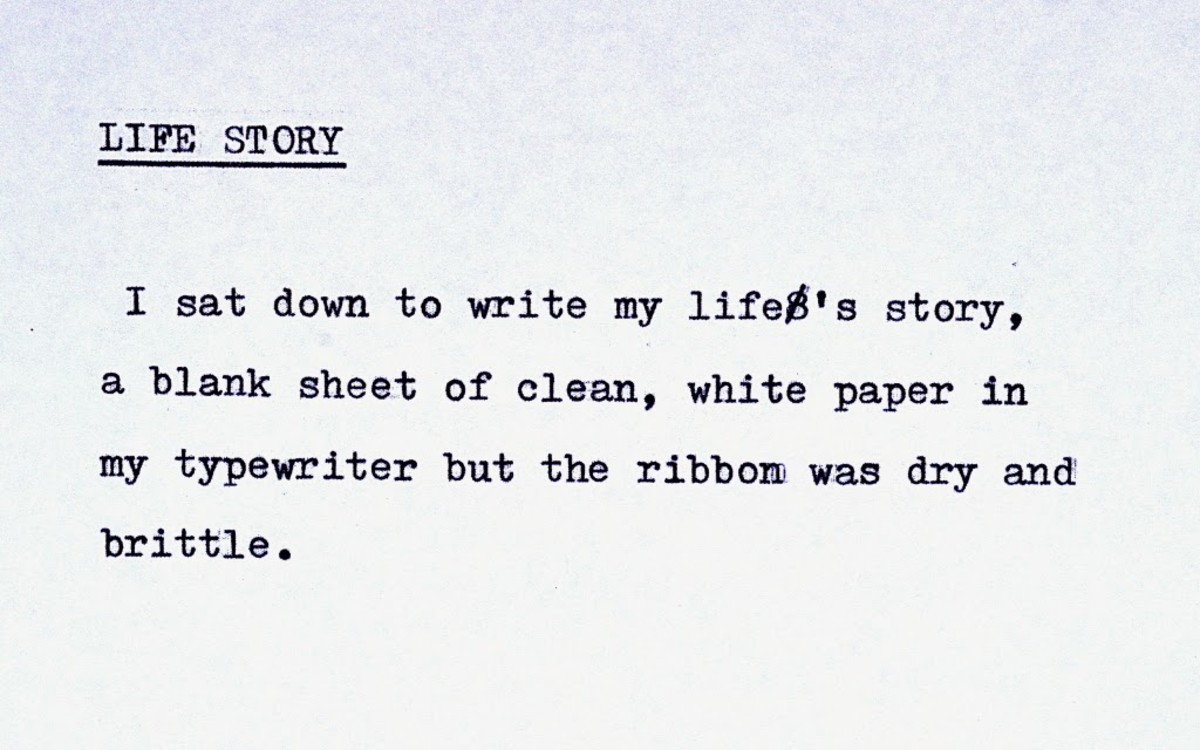How to Write a Novel That's Worth Reading
Writing is a Craft

Many writers, especially those who write non-fiction, view a novel simply as a book that tells a story. All that's needed is to take the words from your head and put them on paper. That is why the world is awash in novels that have never been published. This article is not an all in one guide to writing your first novel. Think of it as a starting place. As I write this article I am working on my first novel, so who am I to give advice? The answer to that question is simple: I am in the middle of the struggle, and yes it is a struggle, and I want to share my travails with you, but more important, I want to help you to avoid some of the mistakes that I've already made.
" 'The cat sat on the mat is not the beginning of a story, but 'the cat sat on the dog's mat' is." John Le Carre
Outline, Plan or Go With the Flow
Some writers, including many who have written about the craft of writing on these pages, believe that creativity is something that flows from the mind of the creator, and any formulaic designs such as outlining do nothing but impede the flow of wonderful ideas. Folks of this view are known as "pansters," people who fly (or write) by the seat of their pants. I have often written that the best way to push through the dreaded writer's block is to just start writing. I have found getting words on paper actually "pulls" the thoughts out of your head. But I am not a panster. When blocked I find that letting the words out opens a floodgate of more words. This does not mean that writing consists of just sitting down and hammering out words. You must have a structure.
The great movie director Alfred Hitchcock famously said that a good story is like "life with the dull parts taken out." This dictum can apply to a screenplay or a novel. The important word is "story." You begin with an idea, and then you shape that idea into a concept. Once your concept is transformed into a story, you have begun your novel.
A story is different from a simple telling of facts. The Great novelist John Le Carre´ once said: " 'The cat sat on the mat is not the beginning of a story, but 'the cat sat on the dog's mat' is."
The Critical Parts of a Good Novel
Conflict. This is the most important word to remember when writing fiction. Think of a great story like Casablanca. This wasn't just a story about a guy who owned a nightclub in Casablanca in the early days of World War II.. Humphrey Bogart's character Rick Blaine epitomized conflict. A cynical expatriate, Rick struggled with his feelings about lost love, Ilsa Lund, played by Ingrid Bergman who is married to a hero of the resistance Victor Laszlo. The story transforms Nick from the cynical drunk loner into a high minded hero. He resolves his conflict by the end of the story in one of the most memorable scenes of moviedom.
Larry Brooks, (storyfix.com) author of the book Story Engineering, identified six "core competencies" required to take a novel from just a story to one that may be great fiction. If you own one book on the craft of writing, this should be it. Brooks is also one of the tutorial leaders in the Writer's Digest Online Tutorial series, that I will discuss in more detail later. Here is a brief summary of Brooks' ideas on the six core competencies:
1. Concept. Simply put, this is what your idea all about. Is it about a guy who owns a bar or a bar owner who overcomes his selfishness and becomes a hero?
2. Character. The people who make your story come alive and how to make them real and compelling.
3. Theme. This is different from concept. It's a product of the context of your book, it's subtext, setting, hero's point of view and all of the conflicts and dynamics of the novel.
4. Structure. This is how the story unfolds. Where do you introduce the main character? Do you use flashbacks or set the book out in a linear time line?
5. Scene execution. Among other things, a novel consists of scenes. Well crafted scenes can be the difference between a mediocre novel and a memorable one. In A Bonfire of the Vanities by Tom Wolfe, the scene where Sherman McCoy is first questioned by a police officer is unforgettable.
6. Writing voice. Larry Brooks says that "good and solid" is sufficient. Don't overwrite and be impressed by your sparkling prose.
All of the above may sound very structured. It is. If you're a Stephen King or a Nelson DeMille, you have internalized many of these elements. But if you're an unknown novelist, especially a first time novelist, writing a structured story can be the difference between a book deal and the slush pile. When King or DeMille's agent pitches an acquisitions editor on a new book, all he has to say is Stephen King or Nelson DeMille. Their reputation seals the deal. But for a new kid on the block, you have to prove you know what you're doing, and prove that you know how to follow the time tested rules.
From the Writer's Digest Tutorials
Your Training
When I came up with the idea for my first novel and started to make notes, I realized that I had never taken a course in writing fiction. I began writing the story, but I soon realized that i was lost in a sea of ideas. I've been a writer and journalist for many years, but strictly in the realm of non-fiction. I struggled with thoughts about enrolling in a creative writing course, but I wanted to get going with my idea, as any first time novelist. Here is what I discovered, how it opened my eyes and filled in the blanks in my education. If you take this idea and go with it, the article you're reading shall have been a success. Enroll in the Writer's Digest Online Tutorials. I've taken online seminars, and I'm sure you have. Some have been good, some bad. But these tutorials, based on the six that I've taken so far, are wonderful. They cover everything from developing memorable characters, writing dialogue, structuring stories and just about anything else you can think of about the craft of writing. The cost for a full year subscription (and you can repeat a tutorial as often as you wish) is $130. I have no affiliation or business relationship with Writer's Digest, only as a satisfied customer. Having watched just six so far, my investment has paid off already. Just do it. You can preview the tutorials by going to youtube.com and typing writer's digest tutorials into the search bar.
Writing is a craft, and like any craft it requires structure and following rules. Yes, you can fly by the seat of your pants. Just don't expect to get anywhere soon. Take the tutorials, read up on the craft, and become the writer that you want to be.
The writer of this article is the author of three novels on time travel: The Gray Ship, The Thanksgiving Gang, and A Time of Fear.
Copyright © 2014 by Russell F. Moran








